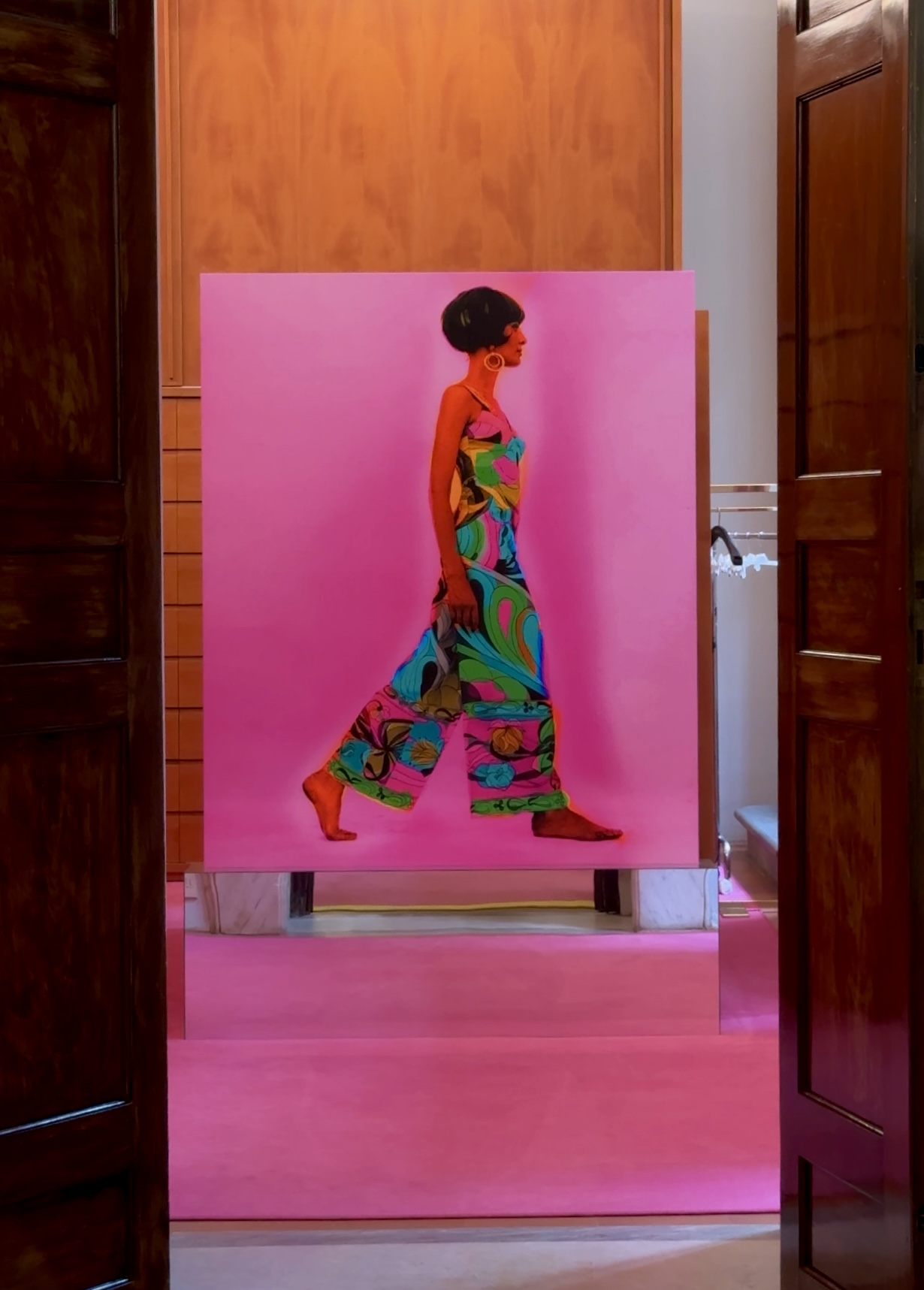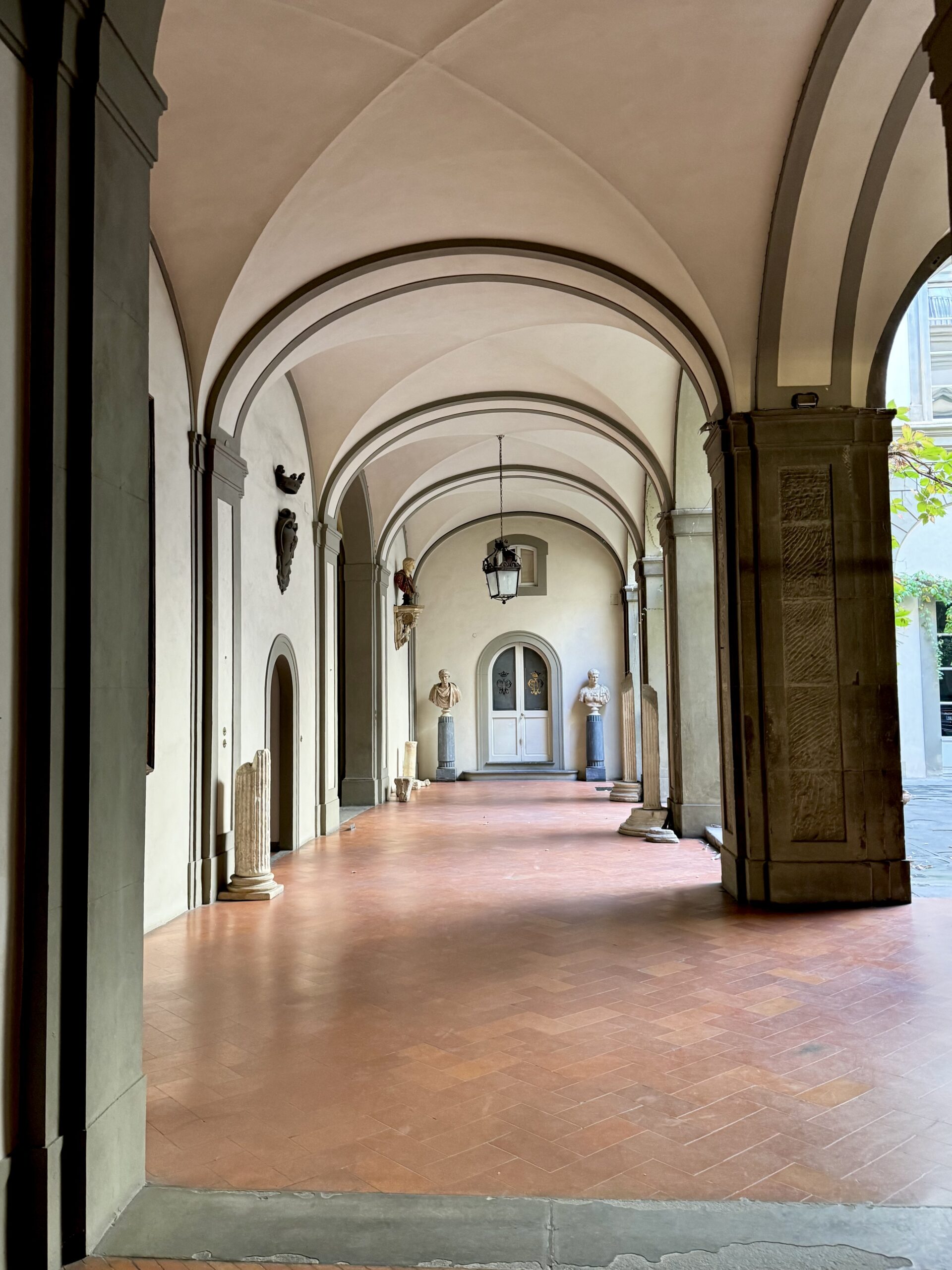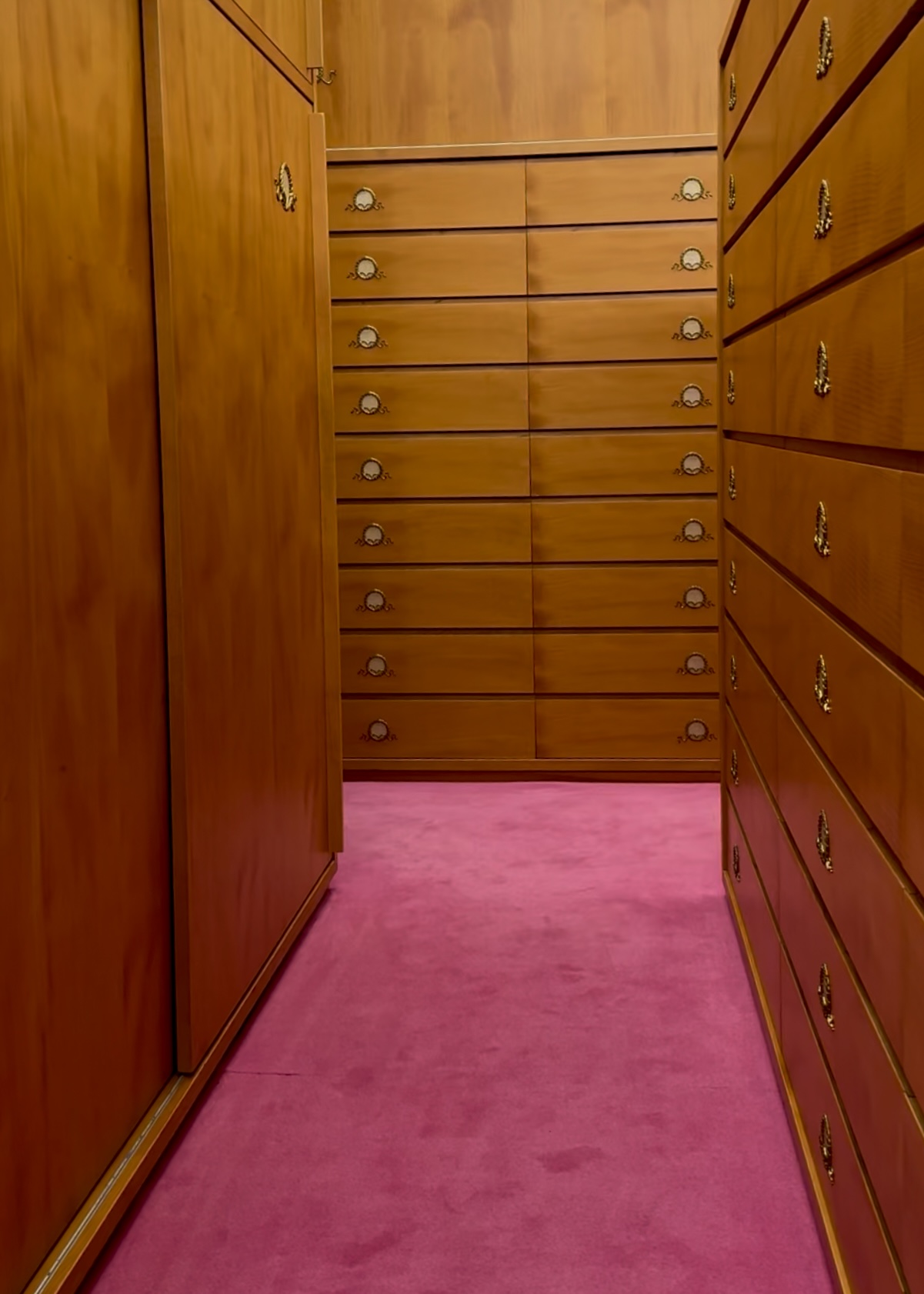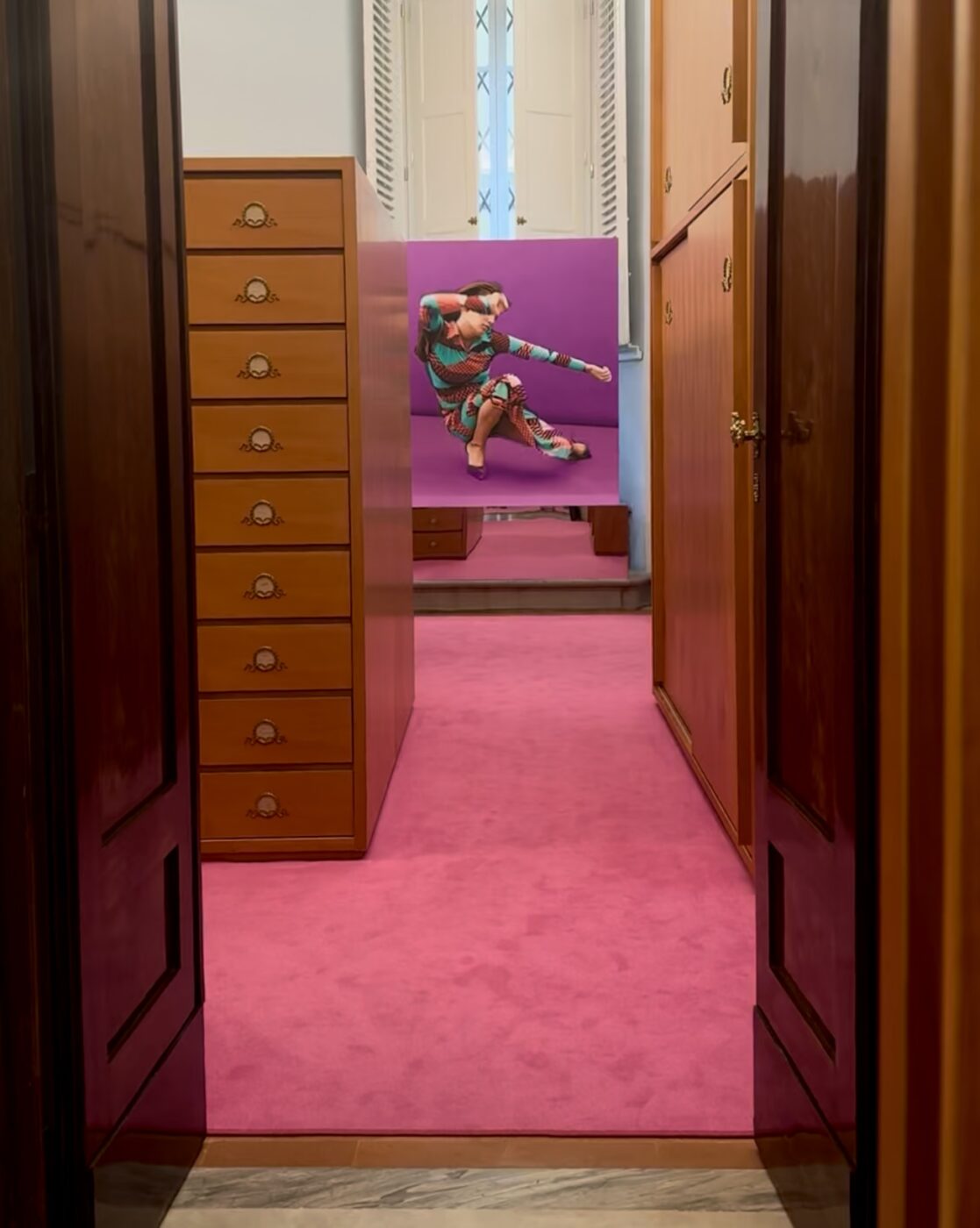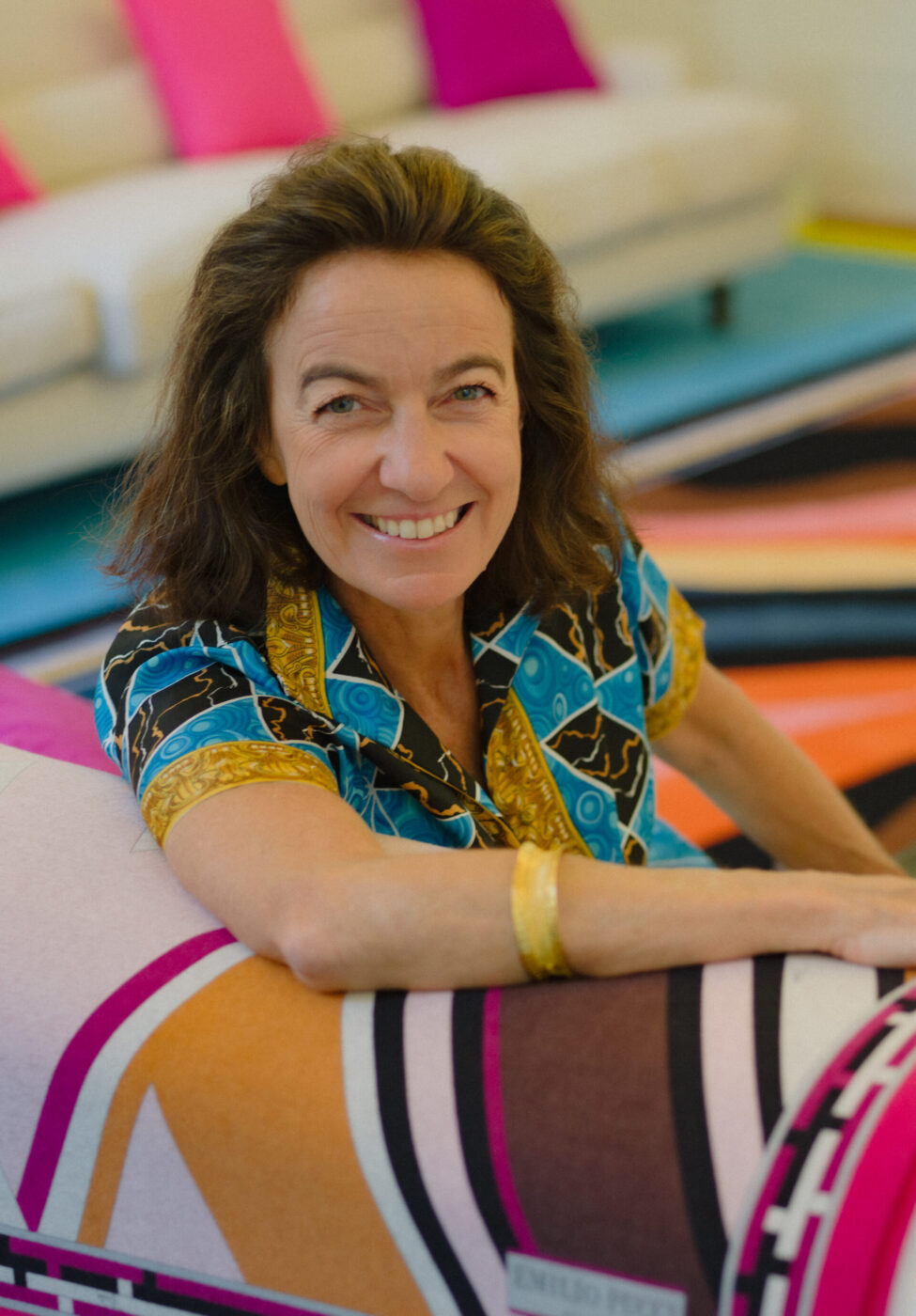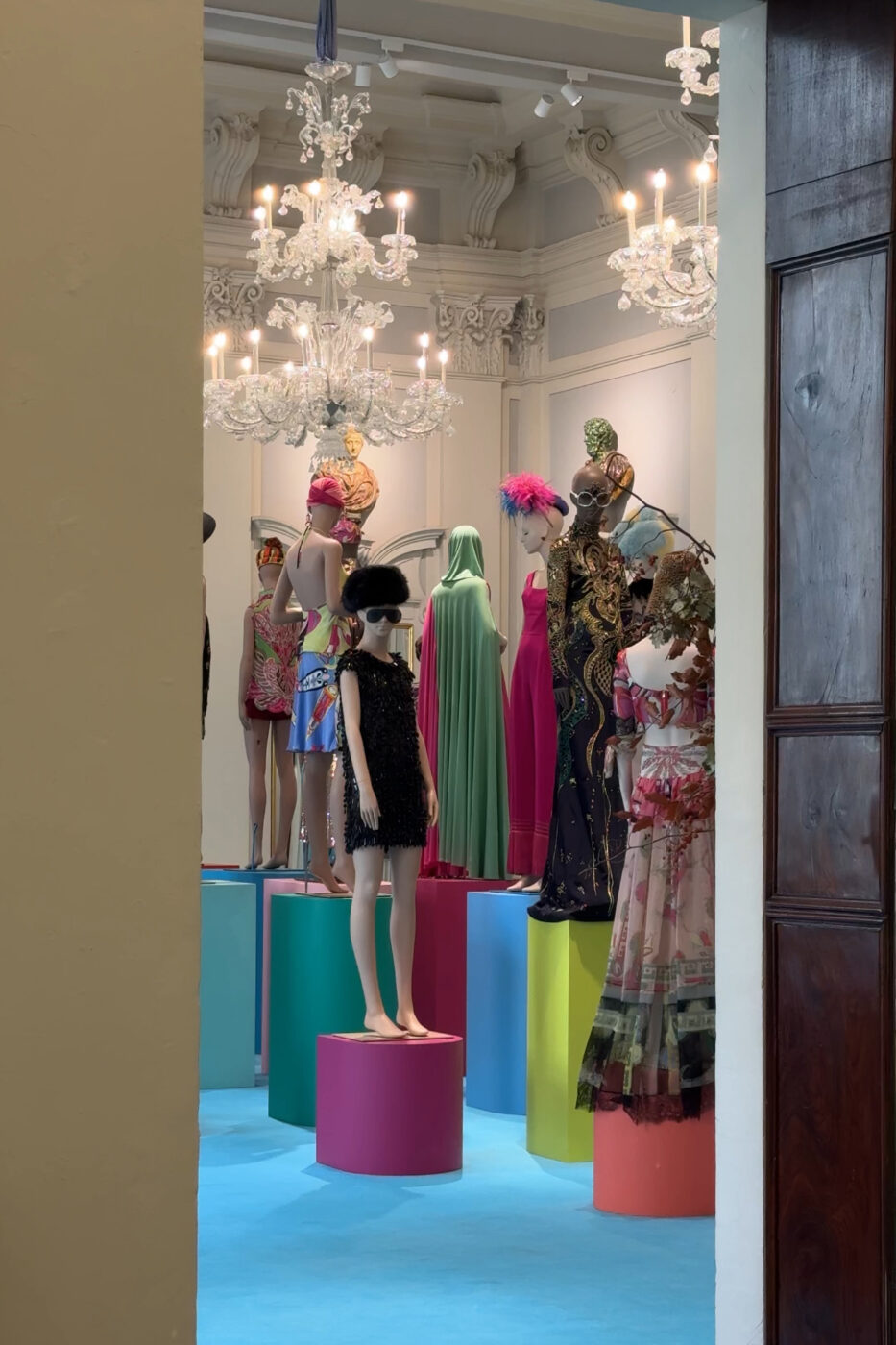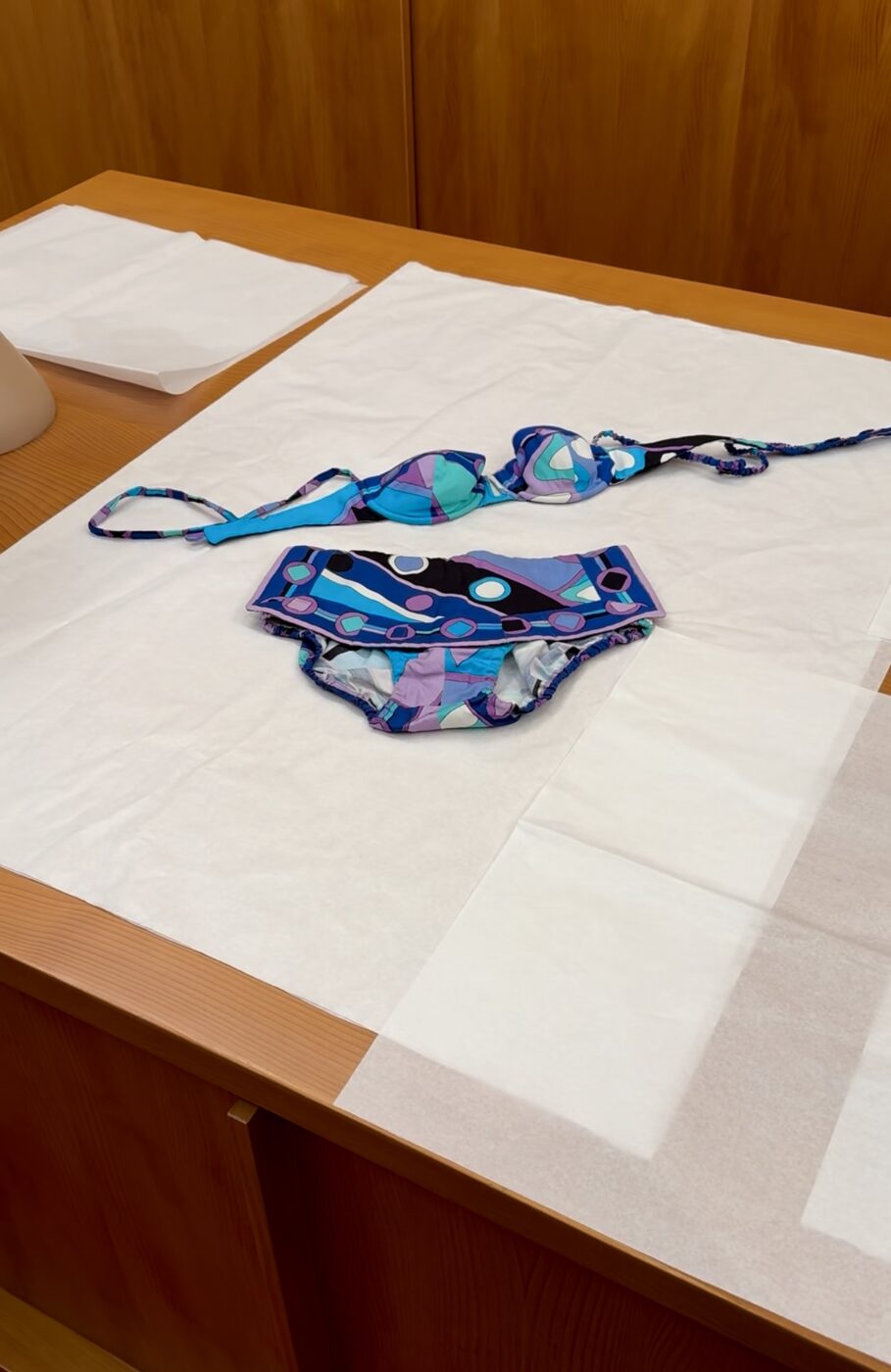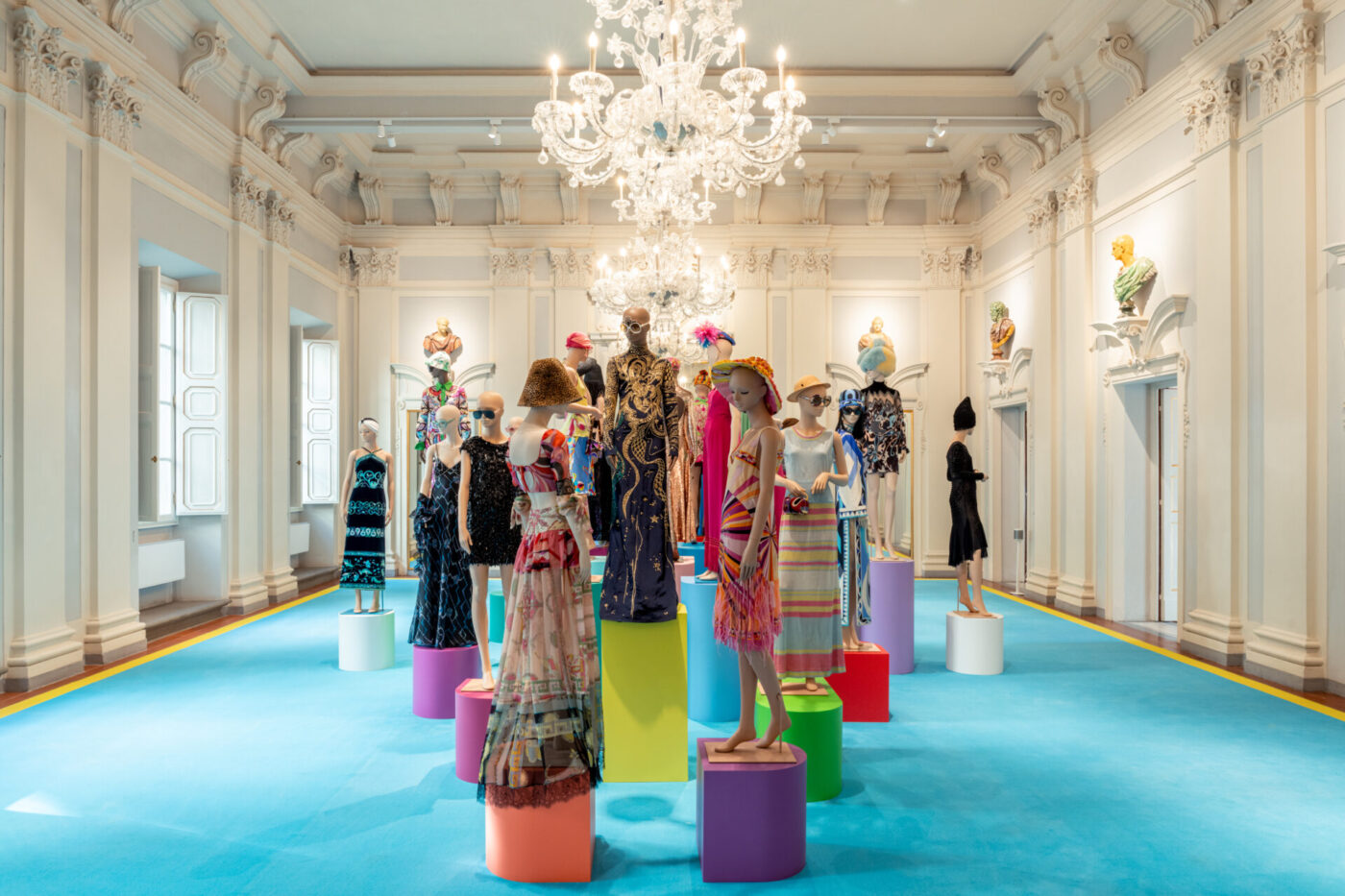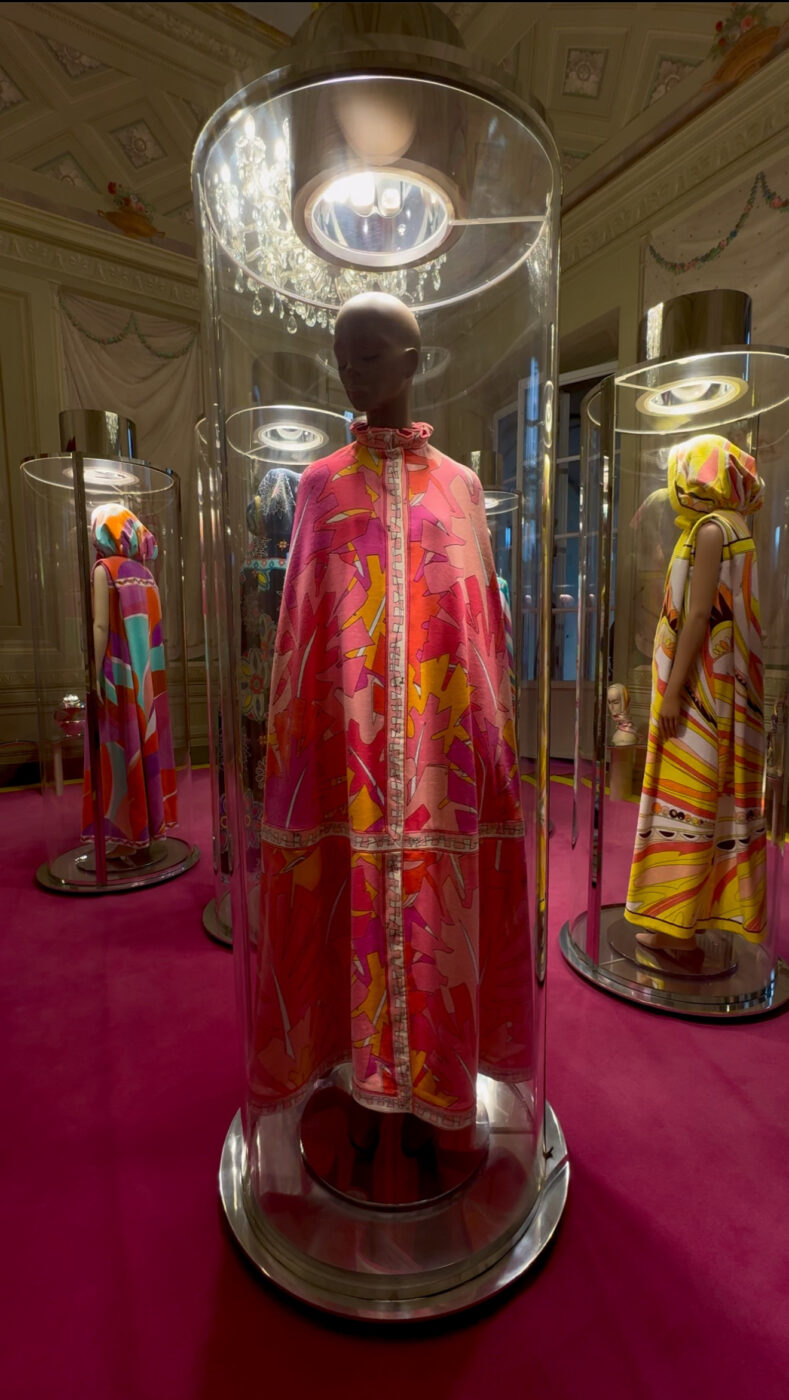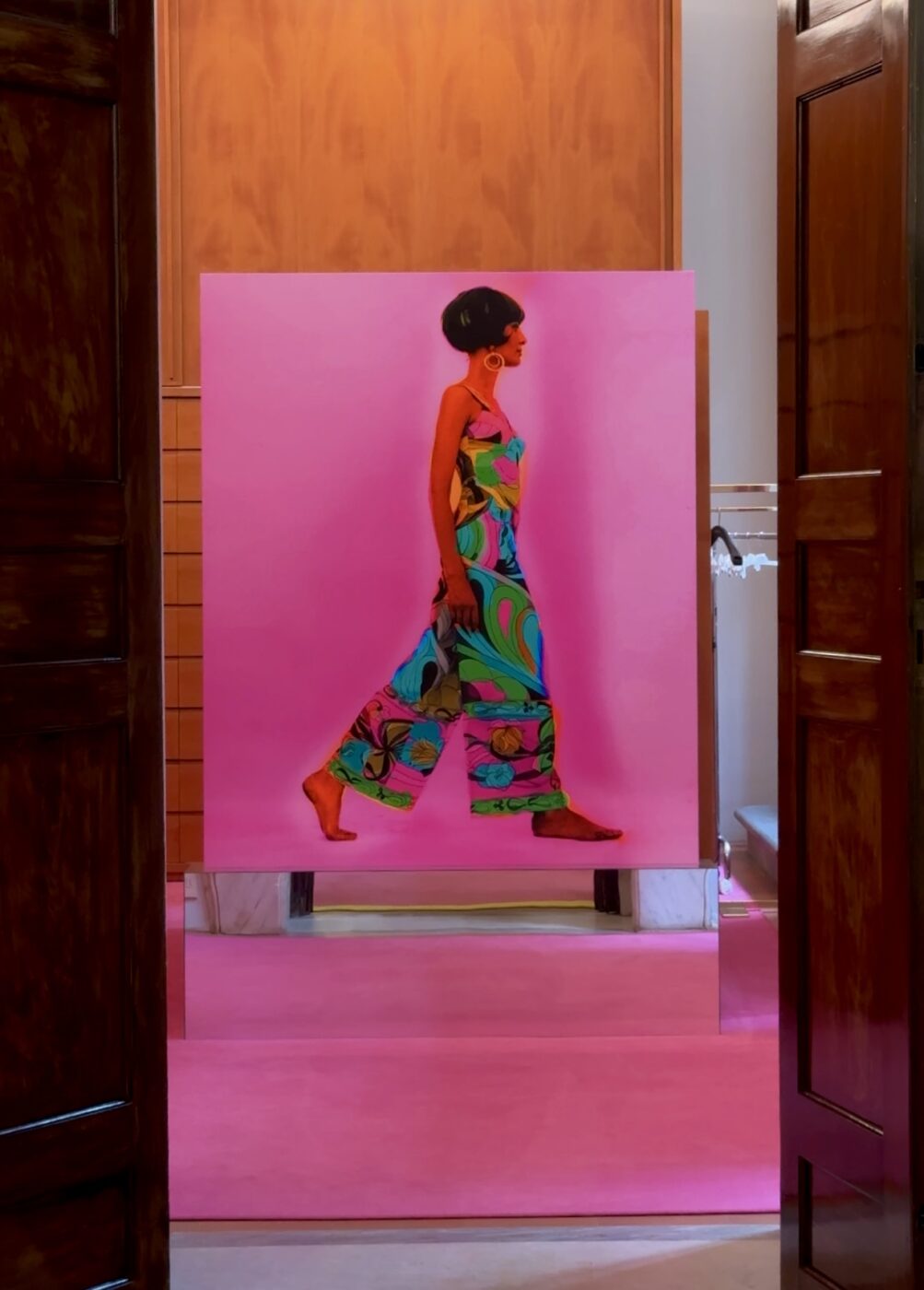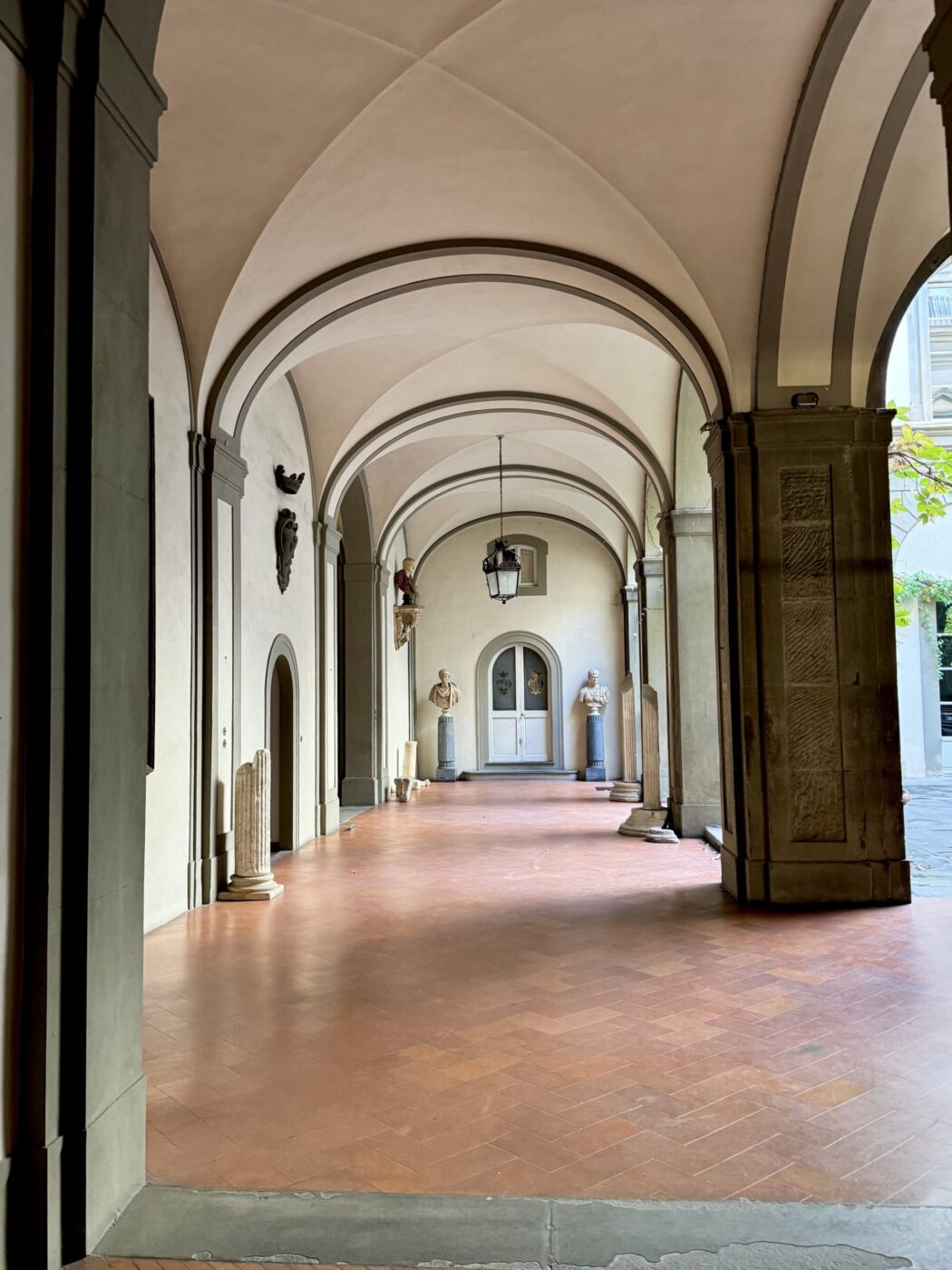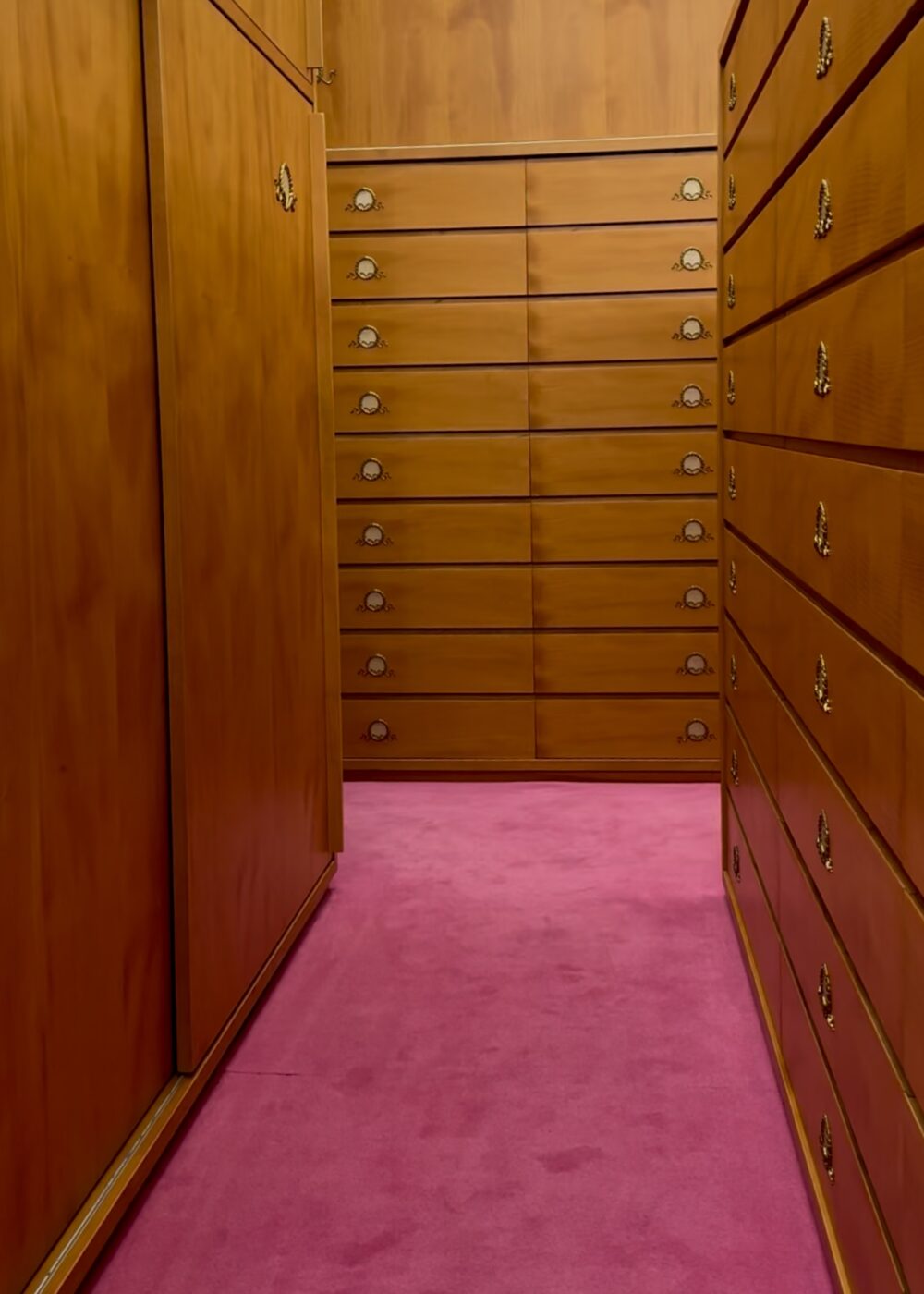Inside Palazzo N6, you don’t merely see color, you become color. You arrive as yourself and leave with bougainvillaea in your cheeks.
It could be said that Palazzo N6, the restored Renaissance palace in Florence, perhaps better known to generations of locals as Palazzo Pucci, is one of modern Italy’s cradles of “chromatic enlightenment.” This cultural destination, which has been the Pucci family residence for centuries, celebrates a way of living in which color and artistic integrity are a universal language that transcends time and trends. “Chromatic enlightenment” is, therefore, a state of multisensory immersion, and those who swirl through the palazzo’s frescoed, stuccoed, carpeted, decorated (…colorful, did I mention?) recount it for years to come. I can imagine, in the future, telling my grandchildren about a palace of “Mediterranean optimism” I visited in an age before my hair was gray—a banquet of Italian visual culture (here, fashion is just the beginning) recast in a contemporary kaleidoscope of turquoise, chocolate, lavender, and, of course, bougainvillaea. Palazzo N6 is like a colorful cult cocktail; one sip and you’re giddy, you’ve overheated, in the best possible way.
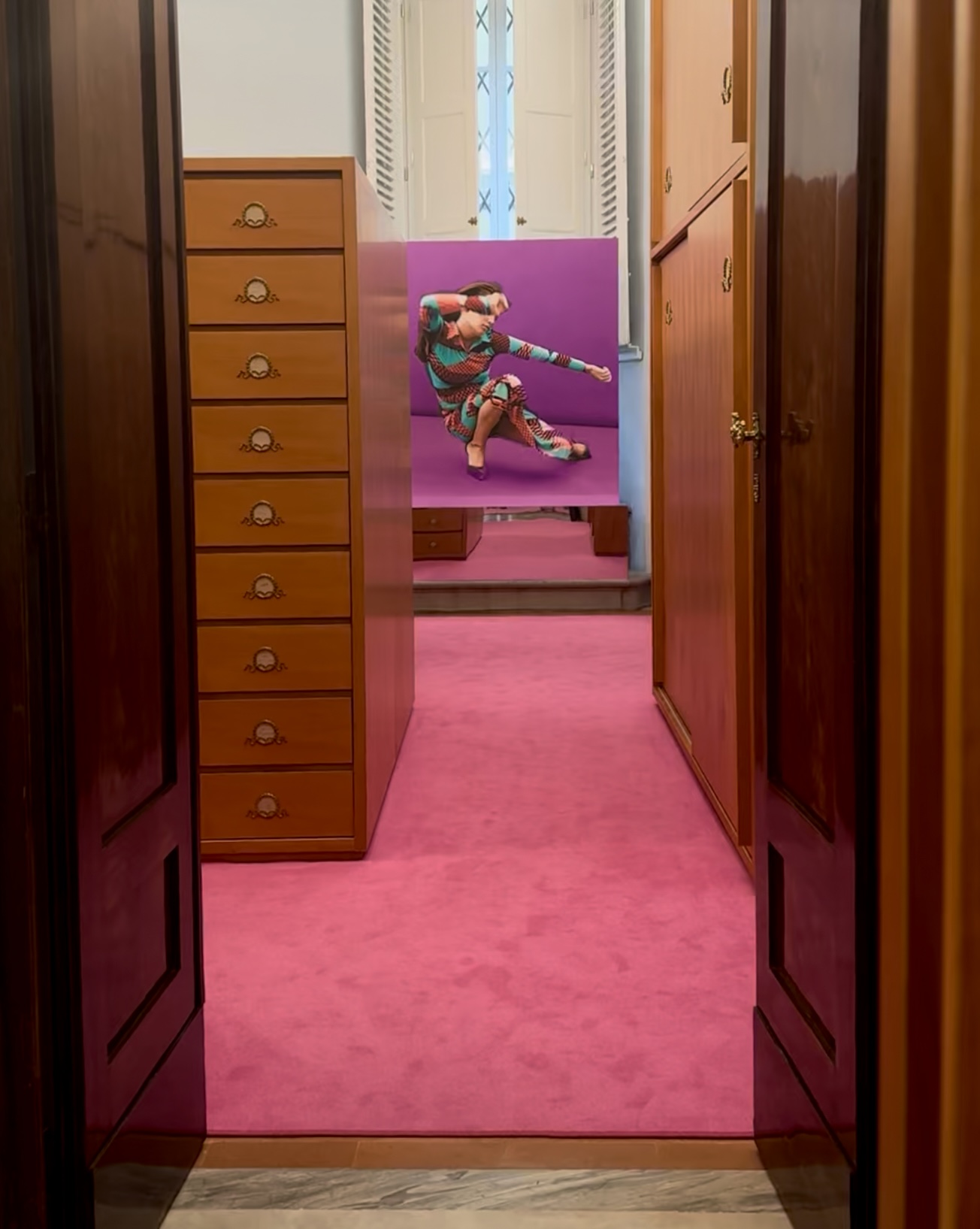
“He just mixed everything! Fashion, art, politics, history, innovation; all his inspirations came together here,” says Laudomia Pucci about her father, Emilio, the politician, designer, and visionary whose legacy of bringing color, optimism, and modernity to post-war fashion, and society more generally, is inscribed in the history books of European culture. “When I was curating the palazzo, it all came very naturally to me. It all goes back to my father’s story of how much this palazzo inspired him; it goes back to the story of Florence and, in part, to Italy. Our eyes are so trained to beauty, and this project pays homage to that,” she says.
Today, Laudomia Pucci is the leading lady of Palazzo N6—resident since birth, and now its custodian and personal curator. She emerges from the ground-floor lounge area, once the artisanal atelier where seamstresses hand-embellished garments from Emilio Pucci’s latest collection. She wears elegant cigarette-leg trousers and a 70-year-old bougainvillea-colored shirt from the Pucci archives.
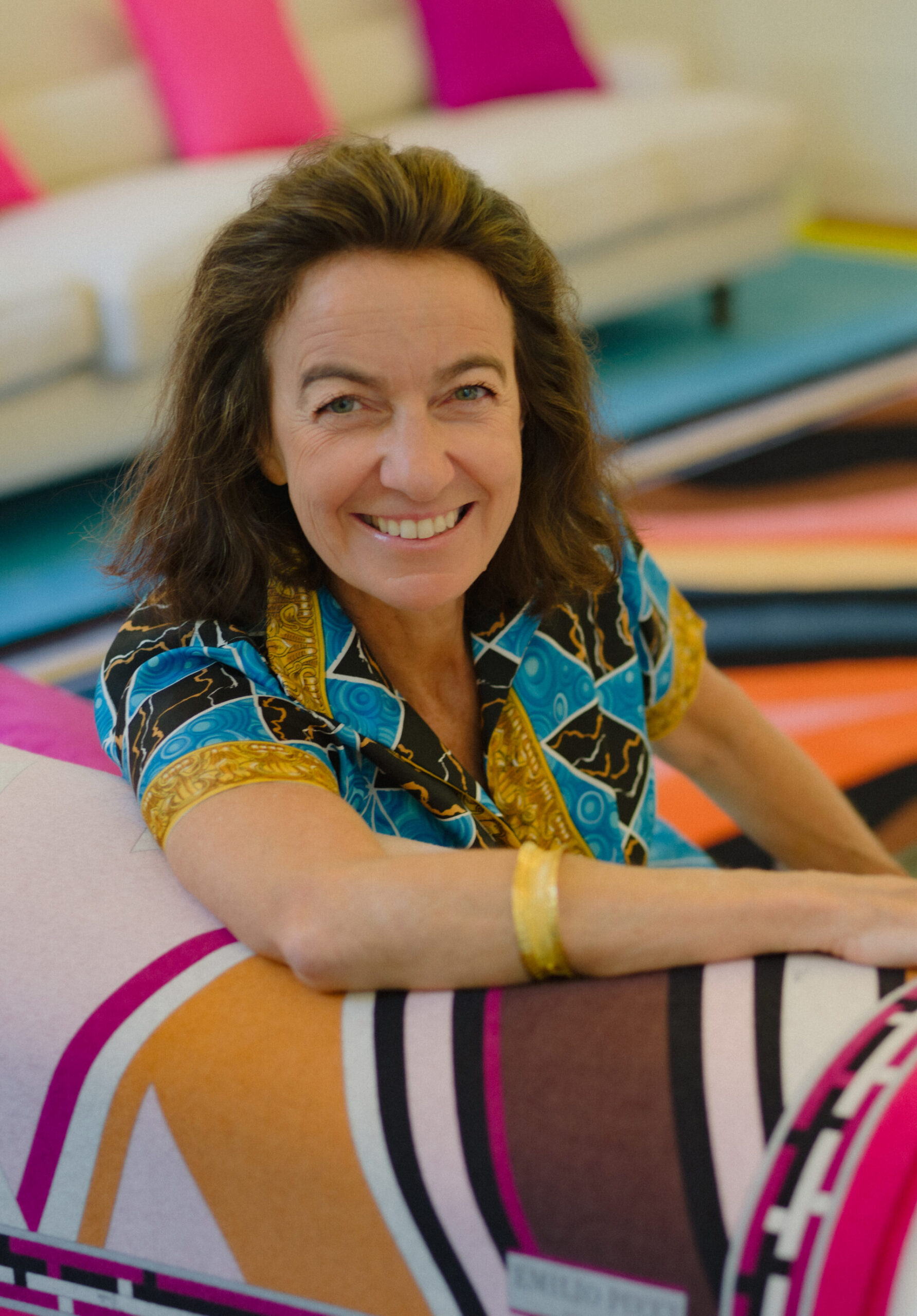
Laudomia Pucci; Photography courtesy of Palazzo N6
“People ask me, ‘What did you do in the palazzo when you were a child?’ And I say, ‘What do you mean what did we do? We lived in it!’” Palazzo N6 has been in Laudomia Pucci’s family for six centuries, in fact, boasting an intricate history that entwines aristocratic legacies with the political, cultural, and artistic fabric of Florence. Its narrative is as colorful as the life of the man who built his empire inside it. Most people know Emilio Pucci as the fashion innovator. Still, few are aware of the extent of his political career, his cultural diplomacy, and his role in Italy’s post-war modernization. He served as a pilot in the Italian Air Force during WWII, during which he famously helped Edda Mussolini escape to Switzerland along with the damning diaries of her husband, Count Galeazzo Ciano, and in the decades that followed, he was elected into the Italian Chamber of Deputies (1963), serving as a deputy in Florence until 1972.
Underlying all this, Emilio Pucci’s dedication to both artistic expression and artisanal heritage, both of which defined daily life in the palazzo, meant that he was perhaps the only figure of his kind who intertwined culture, politics, and creativity during such a transformative period in Italian history. Located at Via dei Pucci, 6 (the number six, we discover, has recurring significance in the Pucci family’s historical narrative), Palazzo Pucci is not, therefore, not just another Florentine palazzo. It symbolizes the dialogues between aristocracy and politics and between high art and artisanal craftsmanship, the latter of which pre-dates the Florentine Renaissance.
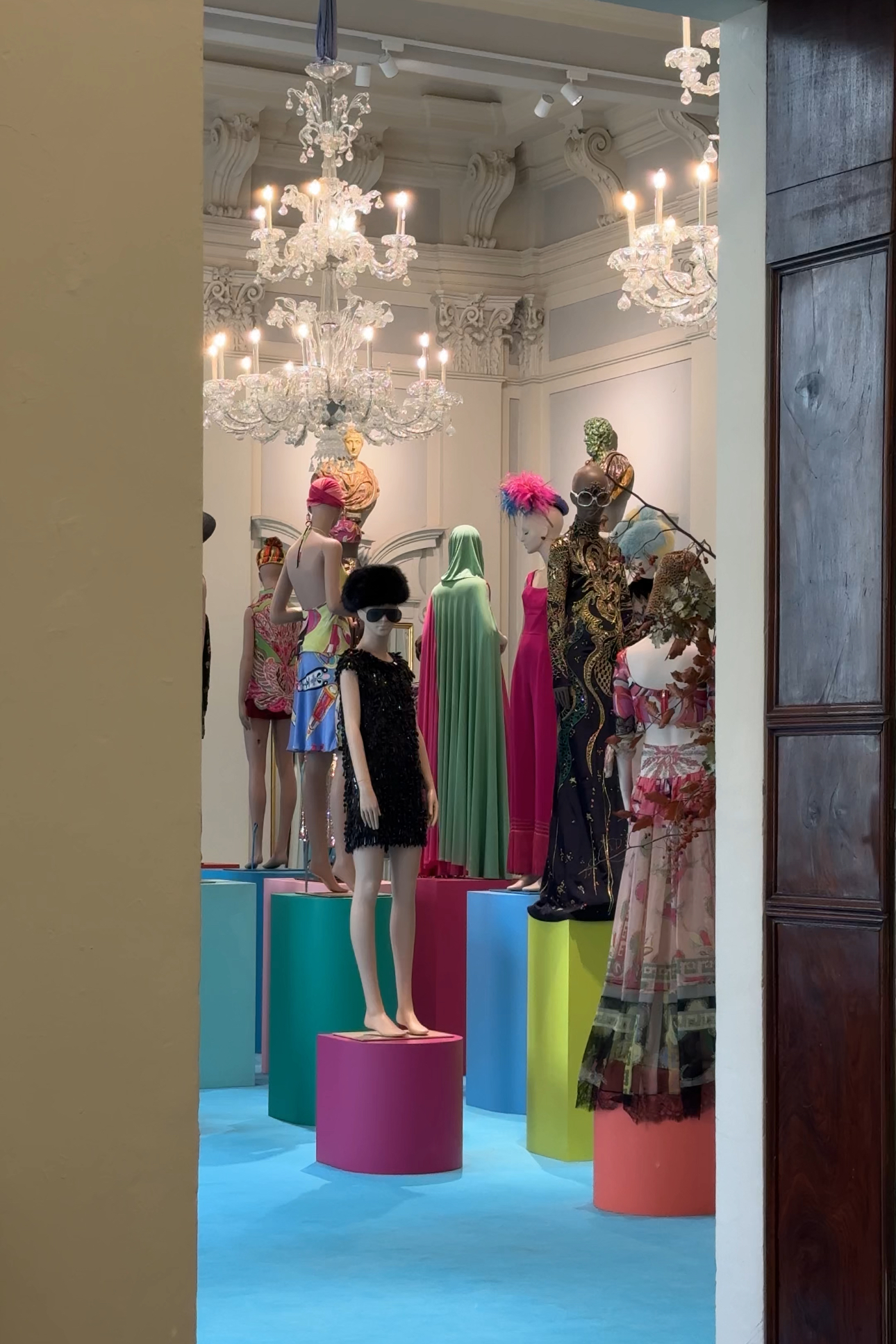
Laudomia Pucci grew up observing her father live, scheme, and dream in the palazzo’s every room. In his downstairs office, he made important phone calls to fellow MPs and officials, under the pastel clouds of 19th-century frescoed ceilings by Italian Neoclassical painter Giuseppe Bezzuoli. Later in his career, in his upstairs Stanza Mannequin (couture atelier), he draped swan-necked models in a whirlwind of his signature “Vivara” hand-printed silks and jerseys. In the chandeliered Sala Bianca, the kind of cinematic environment that prompts you to adjust your posture, he welcomed elegant gatherings to runway presentations showcasing his latest collections. And in quieter moments, he sat with his family for lunch, awed by the tone of serpentine-green marble on the nearby Duomo, in perfect view from his dining room window.
Family, work, and life have always been inextricably linked inside this building, which was the brand’s official “headquarters” for about seventy years. Joining the company to work alongside him in 1985 (and remaining in her corporate role for around four decades), Laudomia Pucci’s dedication, creative foresight, and savvy business acumen further affirmed the brand’s place in the global spotlight. When she decided to step away from her role in the company in 2021, her focus turned to two things closest to her heart, two things she knew more intimately than anyone else: the archives and the palazzo.
“I had no clue what I was doing at first, but I did know that these were two beautiful things I couldn’t keep from public view. So I decided to merge them in this project,” she recalls. “Florence has always had the tradition of arte maggiori and arte minori—high art and artisans—and this is essentially what we’re talking about with this palazzo. I wanted it to be a place that reflects a heritage of both, but with a sense of contemporary freshness.”
“Although this might sound presumptuous of me to say, I think Florence needs a different cultural approach more generally. The weight of history should not be too present; there has to be a lightness, a reinterpretation,” she says.
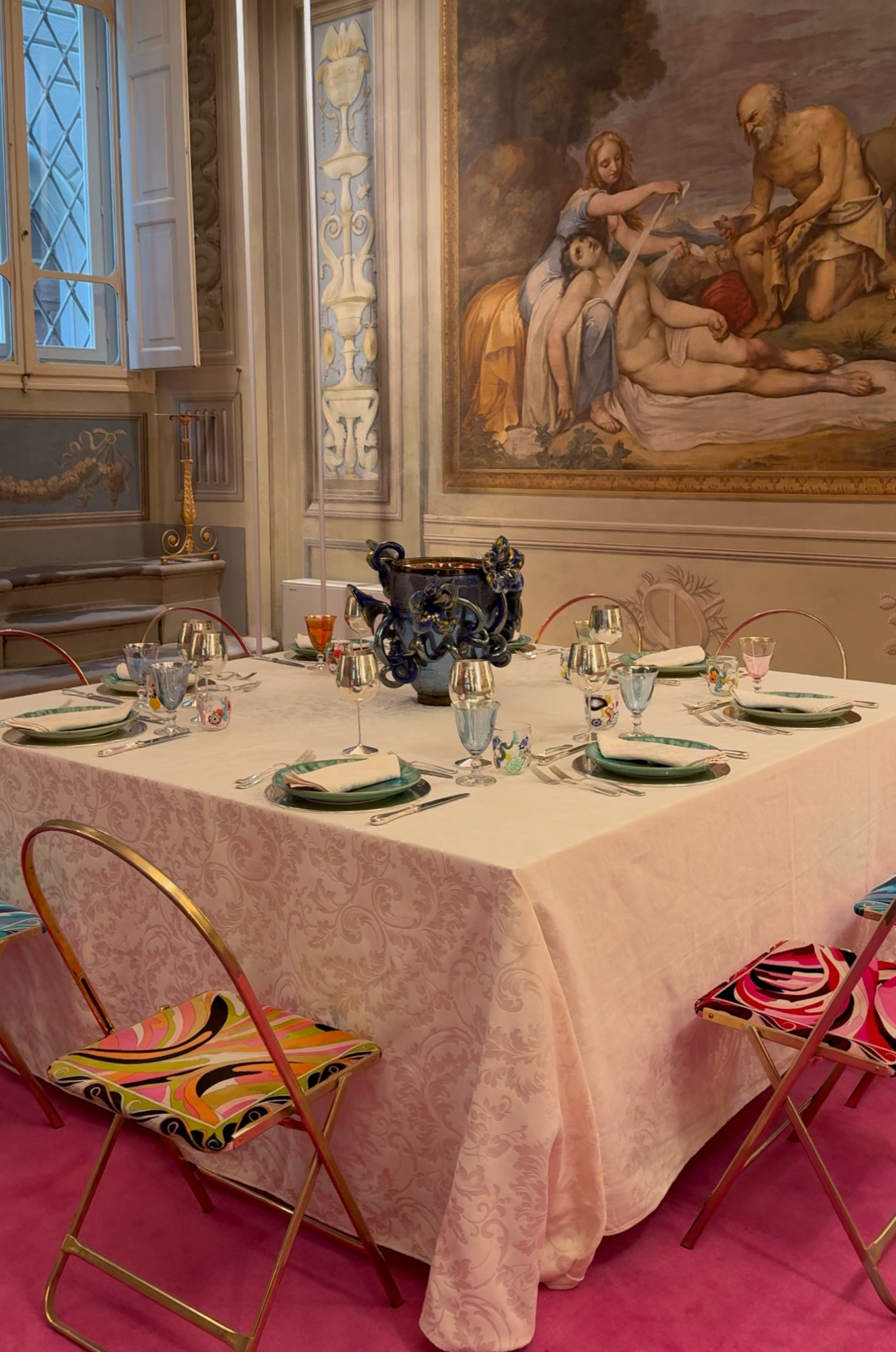
Even the art “experts” could not have curated Palazzo N6 as intuitively as Laudomia Pucci. Careful not to linger on heavy historical accounts (but at the same time leaving no detail unturned), she leads us from the ground-floor guest lounge into a dining room that can now be reserved for private events, through her father’s former workshop, and onto what is arguably the heart of Palazzo N6: its archive. Inside this research-led labyrinth—considered one of the few remaining “Made in Italy” family fashion archives (which Laudomia Pucci describes as a “labor of love”)—wooden ceiling-to-floor cabinets and drawers safeguard a precious collection of Pucci gowns, garments, and accessories spanning the 1950s, ’60s, and ’70s, through to the 2000s. Some are in mint condition, while others require tender care. Many of them are crafted using techniques and materials that no longer exist; for example, a perishing sculptural hat from the ’50s woven from straw strands that can only be restored with Japanese paper: a near-impossible restoration task, even for the most skillful hands.
Laudomia Pucci gently shakes a marabou-feathered silk gown from its slumber inside a gray box; a red carpet moment once, perhaps…
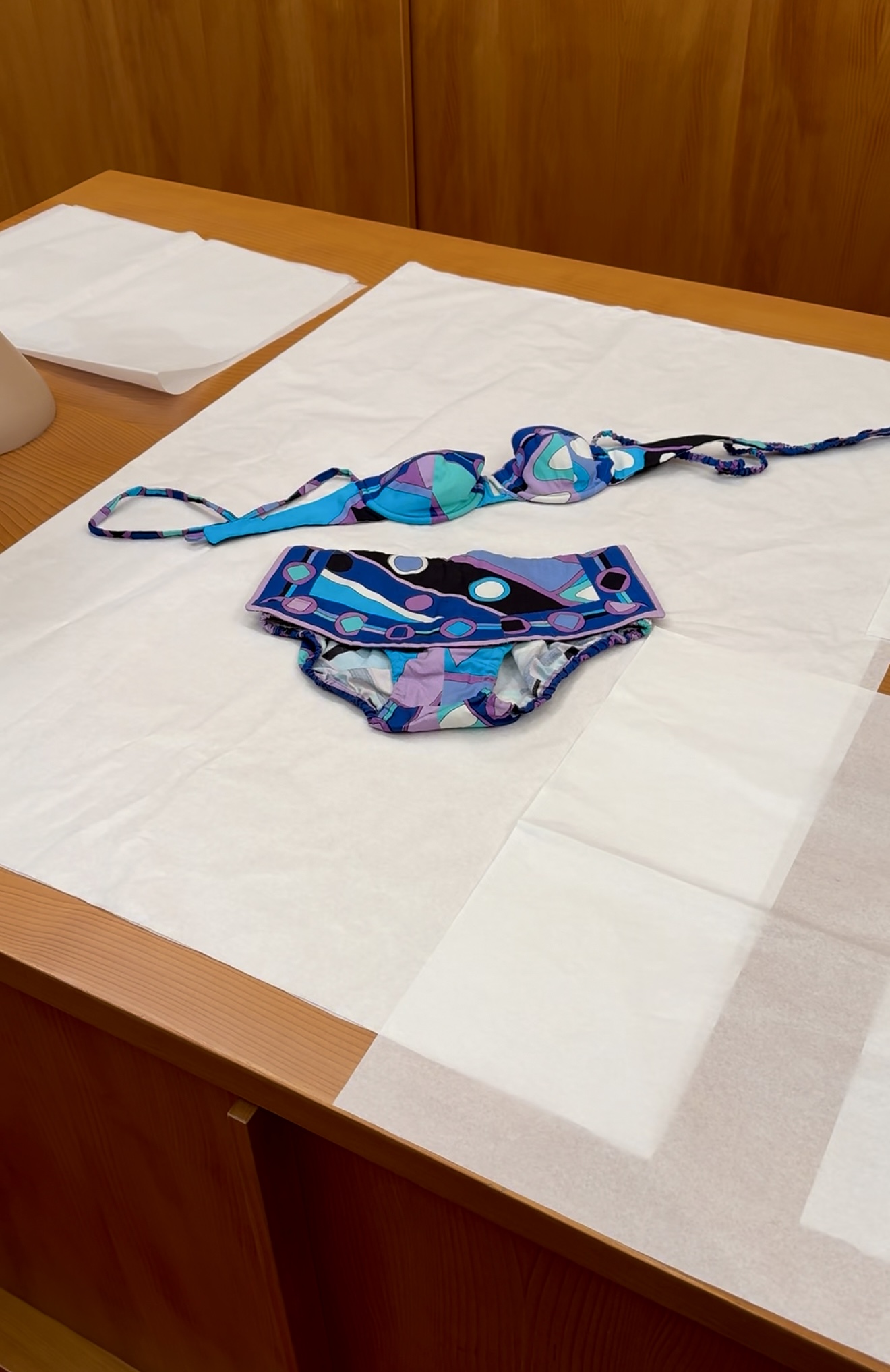
While pointing out the garment’s age marks and blemishes, she explains her latest archive-focused initiative, “Adopt a dress,” a project run in collaboration with the Museum of Textiles in Prato and the Palazzo Pitti Museum. It invites Palazzo N6’s visitors, friends, and clients to sponsor the restoration of these archival treasures that often require painstakingly intricate handwork and years of artisanal expertise to repair. “It’s one thing to have the garments, but it’s another to keep them in good condition and restore them. This is key for me,” she says.
We breeze through the palazzo’s piano nobile, dripping with 17th-century Tuscan paintings that have been in the Pucci family for centuries, many restored to their former luminescent clarity under Laudomia Pucci’s vision. The interplay between history, art, and fashion strikes again with “The Fun Parade,” another spectacle of archival and contemporary Pucci garments and accessories curated on lithe, sunglass-clad mannequins. It’s one of several examples of how Laudomia Pucci is “electrifying history” throughout the palazzo, amping up its energy field with doses of contemporary visual culture where you least expect it. This idea is further enlivened by the discovery of contemporary design and artworks from the likes of Dale Chihuly and Michelangelo Pistoletto. The latter’s Mirror Paintings from the ‘Colour and Light Series’ feature a series of uncanny “Pucci-themed” pinks and blues (entirely a coincidence, explains Laudomia) that reflect the residence’s contemporary spirit. Palazzo Pucci is anything but arte povera, yet these works could not have found a more fitting home.
Another cast of archival starlets stands resplendent in the upstairs Sala Bianca; eyelashes primed and all. This is where Emilio Pucci would host his fashion shows in the 1950s, ’60s, and ’70s, welcoming a gathering of press, clients, colleagues, and brand friends. Embellished, feathered, fitted, knitted, and glittering, these garments (some of which Laudomia has even purchased from private collectors to bring back into Pucci’s archival collection) showcase a kaleidoscope of facets that define the Pucci woman. They chart her aesthetic and conceptual evolution over the decades under the creative direction of Emilio Pucci and other designers who worked for the house, including Laudomia Pucci herself, Julio Espada, Christian Lacroix, Peter Dundas, Massimo Giorgetti and current artistic director, Camille Miceli. While the evolution of the “Pucci woman,” it seems, has always been more a reflection of changing social and cultural currents than of stylistic statements, she has nonetheless maintained her unmistakable DNA over the years, which, as Laudomia Pucci confirms, has always been rooted in a sense of fun, joy, and ease.
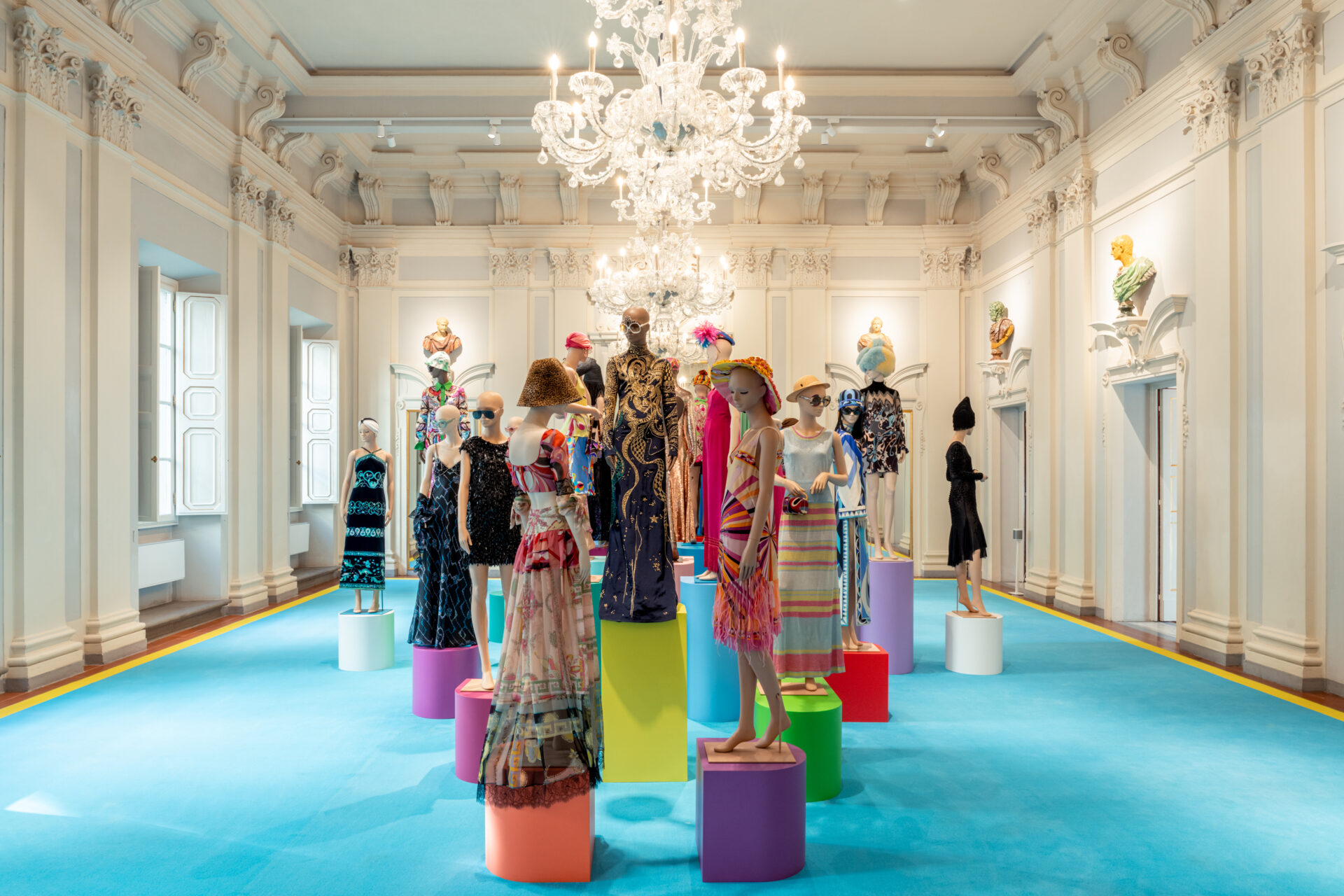
“I always think there is an element of nonchalance that goes with wearing Pucci in the right spirit. Let’s call it… ‘elegant nonchalance’. I think those who connect with the brand beyond merely loving its colors and prints really appreciate its cultural and artistic integrity. This is what we are working hard to preserve here at Palazzo N6, because brand culture and heritage are the essence of Pucci,” she says.
Naturally, there is a room dedicated to Pucci’s “Vivara” print; the swirling, geometrically fluid, jewel-toned print the designer created in 1965, inspired by an aerial view of the Vivara inlet in the Gulf of Naples. The seeming embodiment of “chromatic enlightenment,” this print endures as the house’s most striking visual hallmark, equally artistic and artisanal, adored by generations worldwide as a signature of confidence, culture, and Mediterranean decadence.
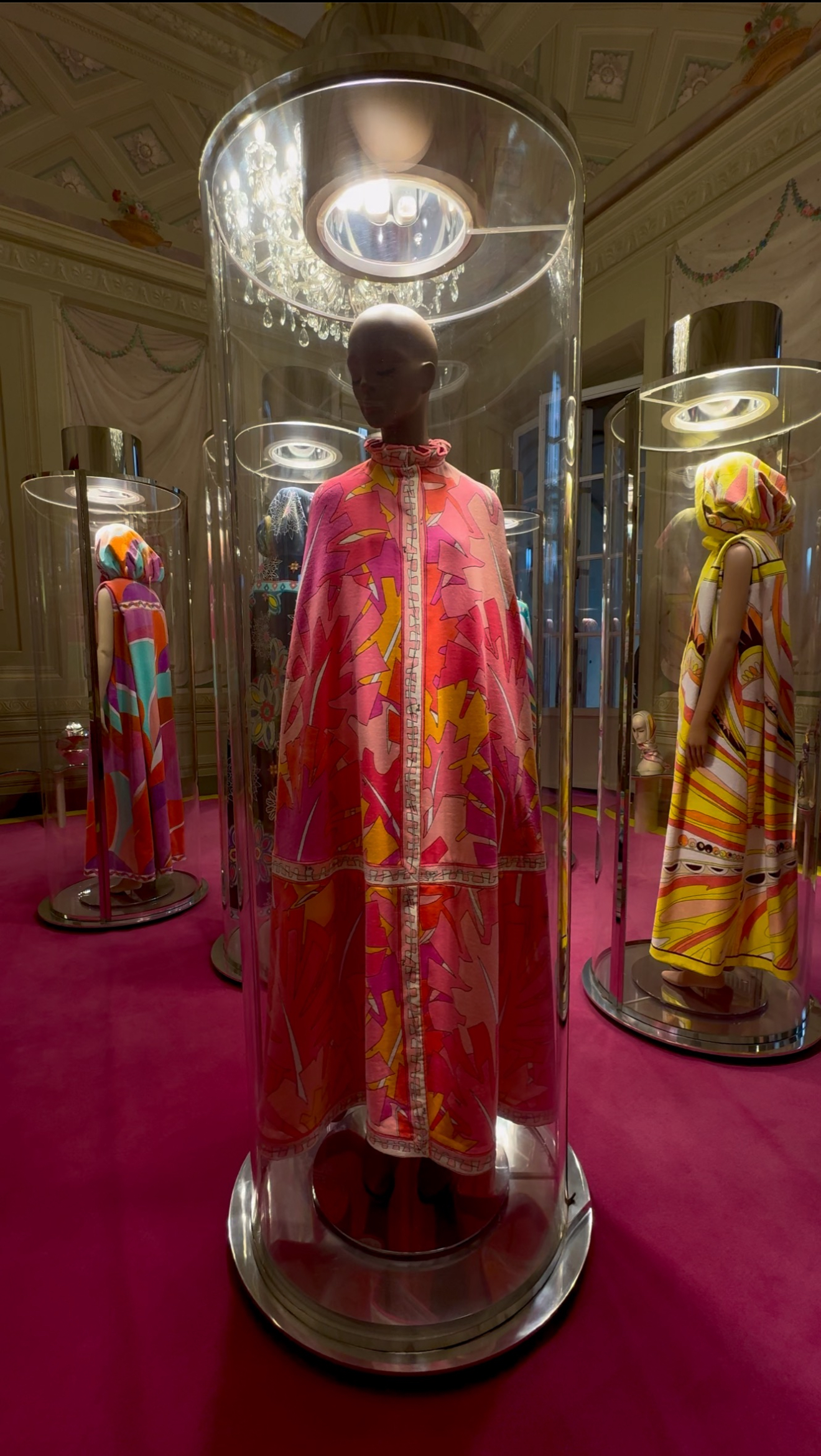
There is a scene in The Great Gatsby when Jay Gatsby, showing Daisy through his palace of a home, throws a wardrobe full of colored and printed shirts up in the air in a state of nervous elation. One supposes the Mediterranean equivalent of such a scene might be recreated right here in Palazzo N6, with a drawer full of Pucci’s “Vivara” print silk scarves fluttering through the air.
It’s hard to believe that nobody has asked Signora Pucci what her favorite color is in quite a while.
“I always live with color. I love light and proportions, so color takes on different dimensions for me depending on where I am or how I’m feeling. But right now, it’s probably fuchsia. Let’s call it bougainvillaea, actually.” The tour ends in her upstairs office, formerly her father’s, where she reiterates her commitment to a future-focused vision for Palazzo N6, to engaging a broader global community in this Florentine dialogue between history, culture, and innovation, and the importance of spending time with young people to maintain fresh perspectives on the world (the latter, she says, her father believed in wholeheartedly). Every week, she still discovers and rediscovers elements of his work and his legacy in books, archival records, and dusty storage boxes, which she opens and is occasionally delighted to find Pucci collections and creations that she, and the world, forgot about decades ago.
“…And that’s the story, for now,” she says.
